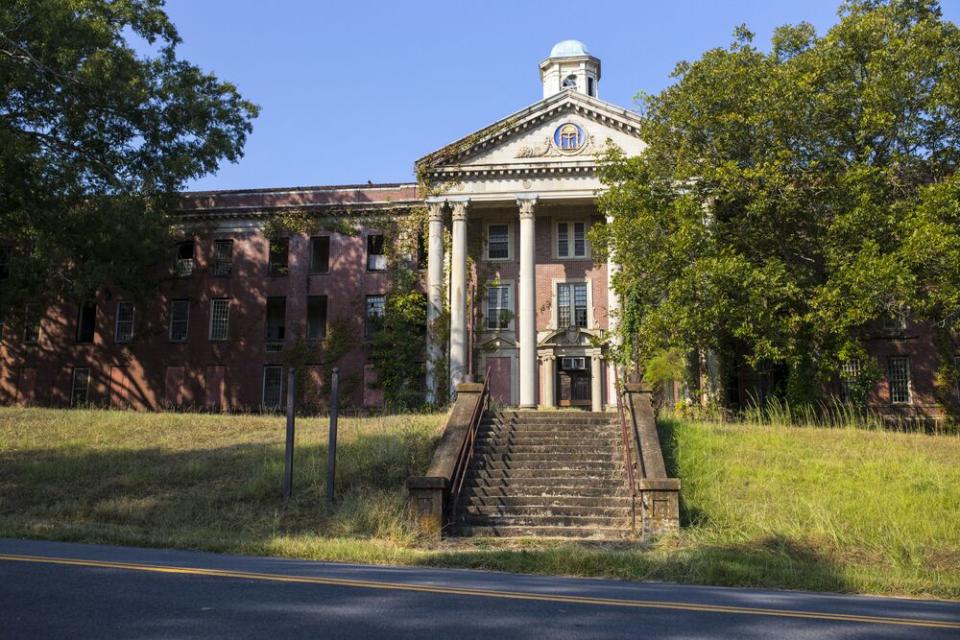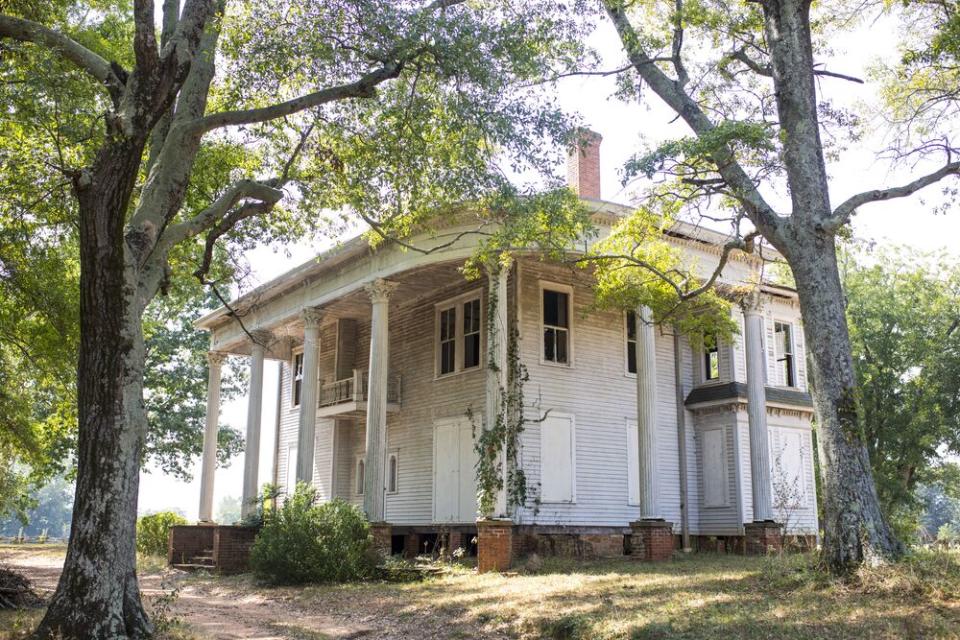The Historic Sites Named to Georgia’s Top 10 “Places in Peril” List

The Georgia Trust for Historic Preservation recently released its 2020 list of 10 Places in Peril. Included are a mental hospital, a 200-year-old tenant farm, an 1899 Baptist church built by freed slaves, and more historic landmarks in danger of being lost forever.
“This is the Trust’s fifteenth annual Places in Peril list,” Mark C. McDonald, president and CEO of the Trust, said in a news release. “We hope the list will continue to bring preservation solutions to Georgia’s imperiled historic resources by highlighting ten representative sites.”
The Georgia Trust for Historic Preservation publishes its annual list of Places in Peril to bring attention to symbols of Georgia’s rich architectural heritage that are threatened by demolition, neglect, lack of maintenance, inappropriate development or insensitive public policy. The hope is that it will encourage owners and individuals, organizations and communities to reinvest and revitalize historic properties that are in peril.
Here are 2020’s Top 10 endangered places in Georgia:
Antioch Baptist Church (Crawfordville)
Antioch Baptist Church was constructed in 1899 by local craftsmen for a congregation founded by freed slaves in 1886. The church no longer holds regular services and the restrooms have been closed off. Though some financial support continues to be provided by descendants of the original congregation, the fate of the building is in the hands of the larger community.
Asbury United Methodist Church (Savannah)
Dating back to 1887, the Asbury United Methodist Church on Abercorn Street is the only African American United Methodist church in Savannah’s historic Victorian District. Water damage has left many portions of the building unusable. The congregation is determined to raise the necessary funds to stay.
Cary Reynolds Elementary School (Doraville)
The 1961 school is an early design of mid-century architect John Portman, whose other works include Atlanta’s Hyatt Regency and Peachtree Center. The building is reportedly in need of significant investments. If not, advocates fear that the school will be abandoned and demolished.
Central State Hospital (Milledgeville)

Georgia’s first psychiatric institution, Central State Hospital eventually become the largest mental hospital in the United States and the second largest in the world. The sprawling campus includes nearly 200 buildings—dating from 1842—on nearly 2,000 acres. Since its full closure in 2013 the scale of the campus and the current condition of many buildings has made fundraising and investment particularly daunting.
Fountain (Stone) Hall (Atlanta)
A National Historic Landmark, Fountain Hall was built in 1882 and remains the most prominent building on the original campus of Atlanta University. Originally named Stone Hall, the building was transferred to Morris Brown College in the early 1930s and renamed to honor former college president Bishop William A. Fountain. Boarded up since 2003, Fountain Hall has fallen victim to both vandalism and weather.
WATCH: This 22-Year-Old Restored Her Family's 1832 Home In Alabama
Heritage Park (Griffin)
Heritage Park symbolizes the efforts to provide education to African Americans in the South during the twentieth century. The park includes a Rosenwald School, an equalization school, gymnasium, and community garden. The park and the properties have been subject to neglect and vandalism in recent years.
John Nelson Deming Home (Valdosta)
The John Deming Home was built in 1898 by carpenter John Deming, who was responsible for many of the city’s grandest houses between the late 1800s and 1920s, most notably The Crescent, built for Colonel W. S. West. The house was purchased by an investment group in 2006 but has been untouched and vacant ever since.
Masonic Lodge #238 (Dalton)
Built in 1915, the lodge offered commercial space on the ground floor while the second floor served as the Masonic meeting hall for African American members. The building has deteriorated significantly in recent years, leading to a loss of much of the interior.
Nolan Crossroads (Bostwick)

The buildings at Nolan Crossroads illustrate the South’s post-Civil War transition from slavery-based agriculture to sharecropping. The oldest existing house dates to 1817 when the property was part of a large plantation. The Nolan family, who bought the land in the 1850s, transitioned the property to a tenant farm and built the main Neoclassical house in 1905. A former commissary for tenant farmers, a mule barn, and several tenant farmhouses in varying states of disrepair still stand.
Rose Hill School (Porterdale)
Rose Hill School was the only African American educational establishment in Porterdale while the Bibb Manufacturing Company was in operation. Vacant for many years, the building suffers from decades of neglect.

